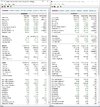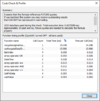- Joined
- 28 December 2013
- Posts
- 6,392
- Reactions
- 24,319
My take on Barney's explanation
The volume-weighted adjusted price (VWAP) is the true "average" price. Barney suggested the (VWAP) has more importance when deciding which positions to be entered rather than accepting the displayed price. The VWAP identifies the true average by factoring in the volume of transactions at a specific price point that's not based on the closing price. (In a nutshell, this is the idea)
The logic behind the strategy
I could have made a trading strategy using just the VWAP & taking those positions with a closing price above it. But as Barney wanted it as a filter, so that's how I have coded it. The VWAP Filter will be used as an additional confirmation annexed to the buy condition.
For the more technical
Using the closing price above or below the VWAP is just crazy. As the summary mentions the differences between (VWAP & SMA) I'll use both to determine the relationship between the two.
More to follow.
Skate.
The volume-weighted adjusted price (VWAP) is the true "average" price. Barney suggested the (VWAP) has more importance when deciding which positions to be entered rather than accepting the displayed price. The VWAP identifies the true average by factoring in the volume of transactions at a specific price point that's not based on the closing price. (In a nutshell, this is the idea)
The logic behind the strategy
I could have made a trading strategy using just the VWAP & taking those positions with a closing price above it. But as Barney wanted it as a filter, so that's how I have coded it. The VWAP Filter will be used as an additional confirmation annexed to the buy condition.
For the more technical
Using the closing price above or below the VWAP is just crazy. As the summary mentions the differences between (VWAP & SMA) I'll use both to determine the relationship between the two.
More to follow.
Skate.




